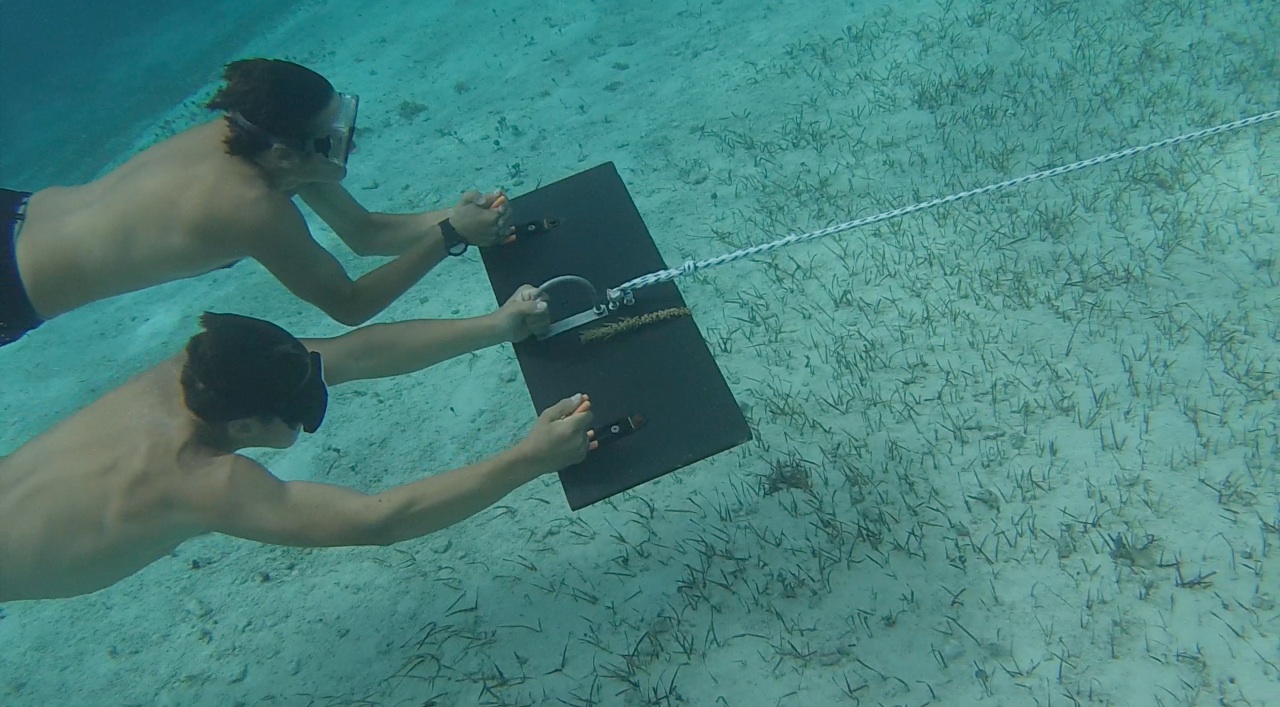Throughout the fall semester, The Sustainable Fisheries team, with help from the conch Island School research class, has been assessing the abundance and distribution of juvenile queen conch in South Eleuthera. Queen conch are ecologically, economically, and culturally important to The Bahamas. Queen conch consume algae and detritus and maintain the health of the sea grass beds. In exports alone they bring in an estimated $7 million annually. Queen conch are also a part of many traditional food dishes in The Bahamas. Collecting data on their populations is useful for fishermen, scientists, and residents of Eleuthera.
Using a towing method, snorkelers are pulled behind the boat on a manta tow board that allows them to dive down to observe the benthic habitat and keep an eye out for queen conch. During each tow the number of conch are counted and recorded along with life stage: juvenile, sub adult, or adult. Juveniles are characterized by the absence of a flared lip, while sub adults have a flared lip, and adults have a fully formed flared lip. This methodology allows the group to rapidly assess large areas and to identify the abundances and locations of queen conch aggregations in South Eleuthera. Preliminary findings are showing a big decline in juvenile populations, however the team will be conducting more tows this week to cover more area in search of queen conch! Stay tuned for more information on queen conch in South Eleuthera.